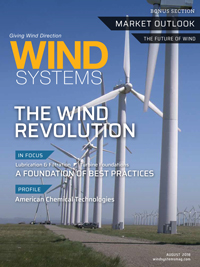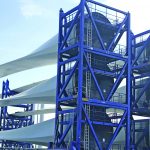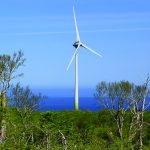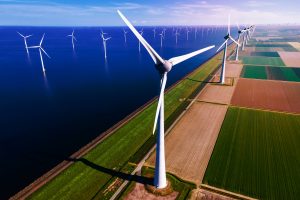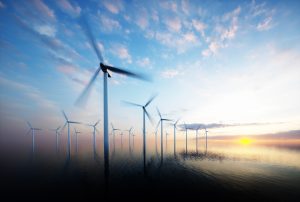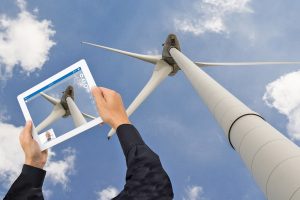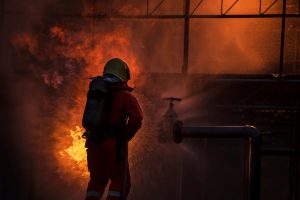Greater decarbonization efforts are driving the continued advancement of clean power. As a result, cost-competitive renewable technologies — such as solar and wind — are increasingly being incorporated into the global electricity grid. By 2040, the share of all renewables in total power generation is expected to reach 40 percent — by which time the International Energy Agency (IEA) estimates that global photovoltaic (PV) solar energy will become the largest source of low-carbon capacity [1].
Meanwhile, the Global Wind Energy Council (GWEC) predicts that worldwide wind-energy capacity will reach 817 GW by 2021, as wind power continues to make its mark on the market — second only to hydropower in terms of capacity in 2017.

However, as the renewables surge continues, there are changing technological, regulatory, and political landscapes to consider. On the one hand, assets are becoming increasingly viable — and by exploiting technological advancements, renewable power can provide solutions to regions suffering from less predictable supply and demand trends (often in remote geographical locations). On the other hand, the rate of industry development is still bound by restrictive policies, technology risk, and unpredictable weather conditions. If wind and solar projects are to further leverage the vast potential of renewable energy sources around the world, the risks should be understood and appropriately mitigated.
Advancements take hold
As wind and solar power become increasingly viable, S&P Global Ratings is observing a burgeoning pipeline of projects that are addressing local electricity challenges. Take the U.K. market, for example, where costs for offshore wind projects have fallen by a little under a third in just five years. In turn, we are increasingly seeing wind projects employing enhanced turbine and submarine cable technology — the Western Link initiative, for example, is a 1 billion pound bi-directional cable project that will transfer 900 MW of onshore and offshore-generated electricity from Scotland to England and Wales.
Similar projects are coming to fruition elsewhere. For instance, in the U.S., Cross Sound Cable is an under-sea transmission line moving excess clean electricity from renewable-rich New England to Long Island, New York, which has historically faced both gas and electric transmission constraints. The project can transmit 330 MW of hydrologic and wind power, and it and will deliver carbon savings equivalent to approximately 600 MW of wind capacity. What’s more, the cable is bi-directional, allowing electricity to flow in either direction according to the grid’s demand needs. The U.S. also has considerable offshore wind power potential that is yet to be explored — a 2012 study by the U.S. government-owned National Renewable Energy Laboratory (NREL) estimates potential offshore capacity at 4,200 GW. Wind speeds off the Atlantic coast and in the Gulf of Mexico are generally lower than wind speeds off the Pacific Coast and Hawaii, but the Atlantic has shallower waters that are more economically attractive due to the likely lower costs of installing turbines (see Chart 1).

There have been significant technological advancements for wind turbines, too — most notably in Europe. For example, one trend is the production of larger and more efficient rotors — and wind-turbine generators (WTGs) established on better foundations. And because offshore wind projects typically spend the largest proportion of capital and operational expenses on WTGs, rotor sizes will likely continue to increase as operators pursue economies of scale — thereby reducing their costs per MW produced and optimizing their yields and efficiency ratios. And as the costs continue to fall, the number of wind projects will continue to increase.
Advancements to PV technology also have resulted in solar power becoming more viable — with solar additions to the grid increasing at pace every year (see Chart 2). In Asia Pacific, for example, the Asian Renewable Energy Hub project will harness Western Australia’s wind and solar resources and export the electricity generated to Indonesia. In addition to the 2,400 MW of electricity produced by PV solar panels, more than a thousand 300-meter-high onshore wind turbines will also generate electricity to power 7 million homes — enough renewable energy to offset almost 1 billion metric tons of CO₂ during the project’s lifespan.

Elsewhere, U.S.-based Hannon Armstrong Sustainable Infrastructure Capital, Inc. last year issued $163 million of sustainable yield bonds to refinance its land leases, which support a portfolio of 57 utility-scale solar electricity generation projects, with a total generating capacity of approximately 1,200 MW; 73 percent of that is in California, adding to the state’s rapidly growing solar power capacity — in 2010, California laid claim to just 7 MW of capacity; today it boasts 8,618 MW [2].
Mitigating risks
Yet, with technological developments materializing at pace, there are myriad risks to address — not least possible environmental ramifications during the assembly and implementation phases. These can include considerations during the construction phase (including technology and counter-party risks) or during the operation phase (such as resource, regulatory, and market risks). Importantly, as technologies continue to advance, we can expect their associated risks to evolve, too.
Notably, wind-farm projects face significant construction risks. For example, the U.K.-based Greater Gabbard wind farm, a 504 MW-capacity project constructed by Shanghai Zhenhua Heavy Industries Ltd., was subject to cost and schedule overruns after cracks in the monopiles were discovered. However, we believe that as the industry matures, construction risk is being better understood — and with understanding comes the improved ability to mitigate. There are also operational considerations, namely resource risk. For example, project owners must consider whether the project has the necessary wind resources to meet performance requirements. The development of more sophisticated undersea cables also means that projects are moving farther from shore — which, in turn, may also bring heightened risks (particularly in the form of harsher weather conditions and deeper sea levels).

These complexities can become accentuated when the technologies installed are different to those proposed during the bidding phase. Notably, we are observing that some Germany-based utilities are factoring in immediate technological advancements as part of their assumed costs for offshore wind projects to be built in the next decade. Limiting the environmental impacts during construction has also become progressively more significant for market participants: The TenneT project, for instance, requires all contractor ships to certify they do not discharge waste into the North Sea while installing undersea cables.
Similarly, solar power generators can come up against construction risk, market risk, and the risk of inconsistent energy generation because of a lack of sunshine. However, new technologies could help to mitigate this risk, with battery storage technology expected to be the next major disruption to the American grid. As the U.S. heightens its reliance on solar energy — often through state-based Renewable Portfolio Standards (RPS), such as in California — its intermittent nature could see grid stability become a risk. That is, unless large-scale batteries can come online to secure power consistency.
So, while there are still a number of risks for project owners to consider, what’s clear is that renewables projects are seemingly trending toward more advanced technologies at lower costs — and deeper market penetration globally. As both wind and solar advance, one can expect the technological risks, in some scenarios, to become increasingly complex — a factor that project owners must be prepared to balance. That said, the industry is not deterred. Renewable projects (and market opportunities) continue to be launched — benefiting from the promise of abounding renewable energy potential around the world.
References
















